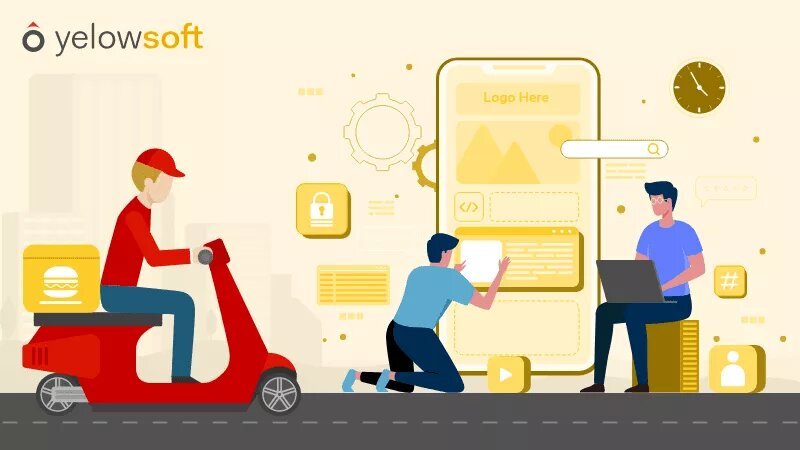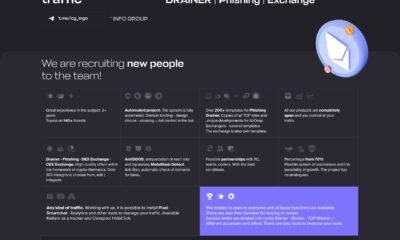Technology
Food Delivery App Development: All You Need To Understand About Building a Food Delivery Platform
The past few years have seen a huge increase in the popularity of food delivery app. The food delivery service sector has advanced as a result of the COVID-19 pandemic.
The pandemic has increased the demand for food delivery services because of social-distancing protocols and people’s fear of infection. Notably, the leaders earn millions of dollars in investment and attract tens of thousands of clients on a daily basis.
Businesses including UberEats, Deliveroo, and DoorDash have all reported a sharp increase in orders between February and March 2020. Business Insider claims that one of the industries with the greatest growth in 2020 was the on-demand food delivery business.
This way, the year 2020 seems to mark the beginning of a golden era for the development of food delivery apps.
Along with the giant food delivery platforms that already rule the market, several start-up food businesses are entering the market to capitalize on these prospects. Although there is fierce competition, entrants to the food delivery industry shouldn’t be deterred by it.
If you have an original idea and solid software with cutting-edge app development capability, there’s a good chance you’ll be successful. Finding loopholes in the products and services of your rivals can help you develop a smart solution.
If you are planning to build a successful on-demand food delivery app, you must take into account a few crucial factors before moving on. Everything you need to know about developing a food delivery platform is covered in this article.
So let’s get started!
Food Delivery App Market Size and Stats
The food delivery industry continues to flourish in 2021. The popularity of meal delivery apps has not decreased even as consumers return to eating in person more frequently. Applications for food delivery have a promising future in the upcoming few years.
Food delivery app development is the best digital asset for boosting your fame and achieving success. The statistics listed below will help you understand why you should invest in developing a mobile application for food delivery as well as the potential ROI and future potential of such an investment.
- At a CAGR of 11.51 percent, the global market for online meal delivery is anticipated to increase from $111.32 billion in 2020 to $154.34 billion in 2023.
- By 2027, there will likely be 2,613.2 million users in the online food delivery market.
- According to a National Restaurant Association report, millennials and Americans, in general, are more inclined than ever to order delivery, with delivery rates rising to 60% and 71%, respectively.
- Consumer preference for online ordering for delivery is currently 70%, and in the near future, it is anticipated to increase by more than 15%.
- Adroit Market Research estimates that by 2023, the market for online food delivery would likely reach $161.74 billion.
These numbers demonstrate that the market for meal delivery is expanding and that there is a large amount of room for new service providers in this sector. UberEats, Zomato, and Swiggy are some of the giant food delivery services you will be up against before you enter the market.
Hence, your food delivery app needs to offer a standout service or feature in order to be noticed by your target market.
Business Models of Food Delivery App
The Aggregator Model
The aggregator is the principal food delivery business model in which restaurants and customers collaborate on a single platform. The targeted client chooses an item from the menu, places an order, and the aggregator collects the order and sends it to the relevant eateries.
After that, the order is deliver by the restaurant’s personnel. Additionally, customers have the option of picking up their food in person at a restaurant or a designated place.
Logistics-support Model
In this model, the platform owner is in charge of everything, from starting the meal delivery service to accepting orders and fulfilling them on schedule. This model offers tremendous flexibility that enables business owners to communicate directly with customers without the assistance of a third party.
Restaurants and customers pay fixed costs to the logistics-focused platform, which helps it turn a profit.
How Does a Food Delivery App Work?
The simplest process of a food delivery app is shown below.
- After registering to the app, users will browse and search it. They’ll browse the feed to find the restaurants they want.
- They will peruse the list of cuisines and add their top picks to the cart.
- Customers can pick their orders and check out.
- They’ll use a variety of payment options to check out after finalizing.
- Customers may monitor their orders in real-time through the app once the restaurant accepts them and begins to prepare them.
- Customers receive their food delivery at their doorstep is the final phase of the food delivery app.
Features of Food Delivery App
Building a food delivery platform alone is insufficient. To make the platform useful for all stakeholders, you must create a complete ecosystem. There are four components to a typical meal delivery application:
Customer App
The most important part of the project is the customer application. Your UI/UX design must be user-friendly in order to attract more users. The user can place meal orders through the customer app from a list of available restaurants.
- Easy Signup
- Advanced Search
- Smooth Order Placement
- Real-time Tracking
- Multiple Payment Methods
- Push Notifications
- Order History
- Ratings and Reviews
Restaurant App
Another component that every meal delivery app needs to have is a feature-rich restaurant app. It makes it simple for managers to keep track of every order and advance it in real-time to ensure orders are fulfilled on schedule.
- Content Management
- Loyalty Campaign Creation
- Push Notifications
- Financial accounting
- Cross interface communication (with couriers and customers)
- Track Earnings
Delivery Provider App
The delivery application needs to be straightforward and useful. It is better to solely provide a mobile version because couriers frequently use applications on the road. You must include the following features:
- Profile Management
- Order Information
- Navigation
- Availability Toggle
- Alerts & Notifications
- Call/chat Options
Admin Panel
An admin panel is a crucial tool for running your organization. The following are some must-have features:
- Restaurant Management
- Order Management
- Real-time Updates
- Analytics & Reports
- Payment Management
- Coupon Management
- In-app Chat Services
- Food Category Management
- Personalized Notifications
- Delivery Personnel Management
Required Team to Create Food Delivery App
To develop food delivery software, the listed below experts are required.
- Front-end programmer
- back-end programmer
- Business Analyst
- Project Manager
- DevOps
- Quality Assistance
Cost to Develop an On-demand Food Delivery App
The cost of developing a meal delivery app typically varies from project to project. Nevertheless, the cost of a food delivery app is determine by a variety of elements, such as the size of the project, the platform it runs on, the total number and complexity of features, the number of third-party integrations needed, and the developer fees.
Therefore, depending on the complexity of your project, the total cost can range from $US30,000 to $US500,000. Depending on the region and the requirements of your app, the range may be increase.
Closing Remarks
Before beginning to develop your food delivery application and moving forward with the launch process, you must be aware of everything that will aid in the development of a successful application.
Through this blog, we have attempted to walk you through the entire process, and by the time you reach the end, we hope you will have a good understanding of what it takes to create a food delivery application and why you need to work with the best app development company.

















